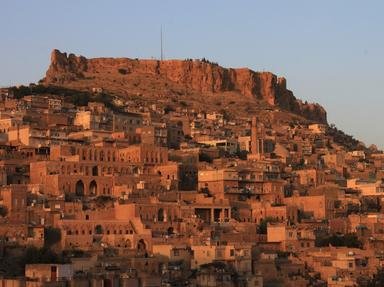Quiz Answer Key and Fun Facts
1. Our setting is Babylonia, the highly fertile area of present-day southern Iraq where the Tigris and the Euphrates rivers run into the Persian Gulf. Which of these best describes the geography of this area?
2. In the 11th to 7th millennium BCE, the ancient Babylonians developed agriculture. They cultivated wheat for the first time, and domesticated sheep, goats, and cattle. Small settlements developed, which led to the first cities in the 4th millennium BCE. Which of these is NOT a reason why the development of agriculture lead to the development of the first cities?
3. The emergence of agriculture and the development of cities also produced social stratification, and the need for dependent labor. What structure in sixth and fifth millenium Near Eastern settlements became the entity responsible for projecting social power, collecting goods, and redistributing them to its dependent laborers?
4. The explosion of trade and administration in ancient Near Eastern cities required some way of keeping track of the goods. Which of these methods for recording transactions arose?
5. The immediate predecessor of "true" writing, was the innovation of impressing signs onto solid clay tablets. But what separates these "numerical tablets" from true writing?
6. Proto-cuneiform, the first full-fledged "true" writing system, first appeared in Uruk during the Uruk IV period, ca. 3400-3100 BCE, and continued to be used at Uruk and other sites until the end of the Uruk III period, roughly 3000 BCE. What kind of a writing system was proto-cuneiform?
7. What language did proto-cuneiform represent?
8. All proto-cuneiform texts are administrative and accounting documents.
9. Since proto-cuneiform was devised for accounting purposes, it's no surprise that numerical signs and the counting system figure prominently in the texts. Which counting system did proto-cuneiform use?
10. As time passed, the political situation in Uruk deteriorated, and finally collapsed around 2,900 BCE. Proto-cuneiform, as it had existed, was dead. However, proto-cuneiform was later adopted by the Sumerians, who transformed it into "true" cuneiform, which remained in use until 100 CE, 3,400 years from the dawn of proto-cuneiform. How does this time span compare to the length of time our alphabet, the Roman alphabet, has been in use?
Source: Author
pu2-ke-qi-ri
This quiz was reviewed by FunTrivia editor
bloomsby before going online.
Any errors found in FunTrivia content are routinely corrected through our feedback system.
